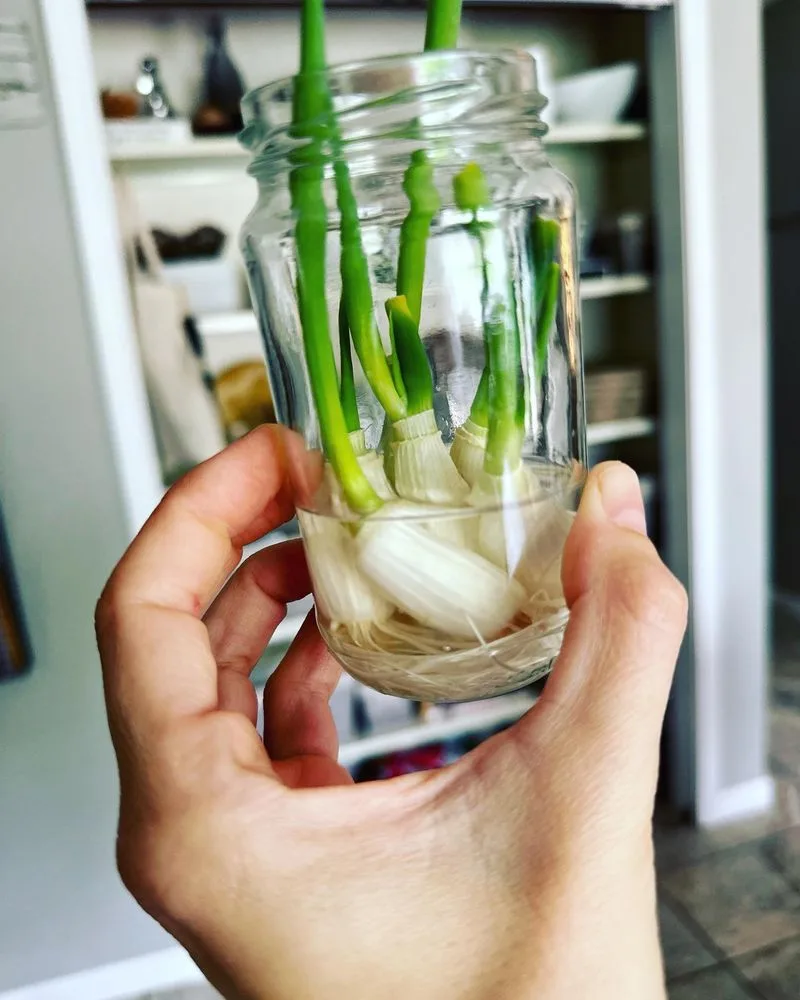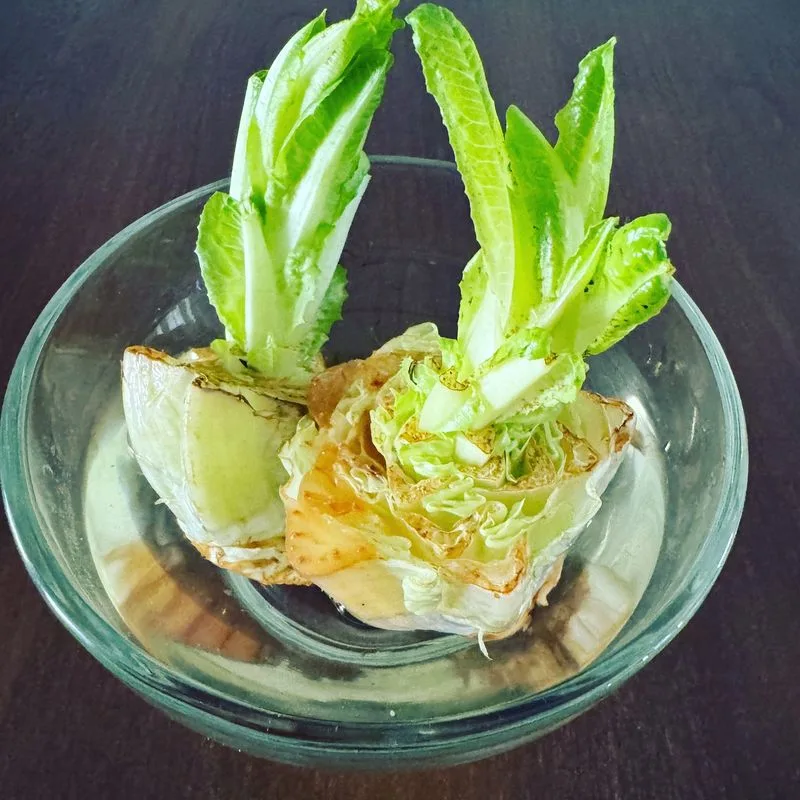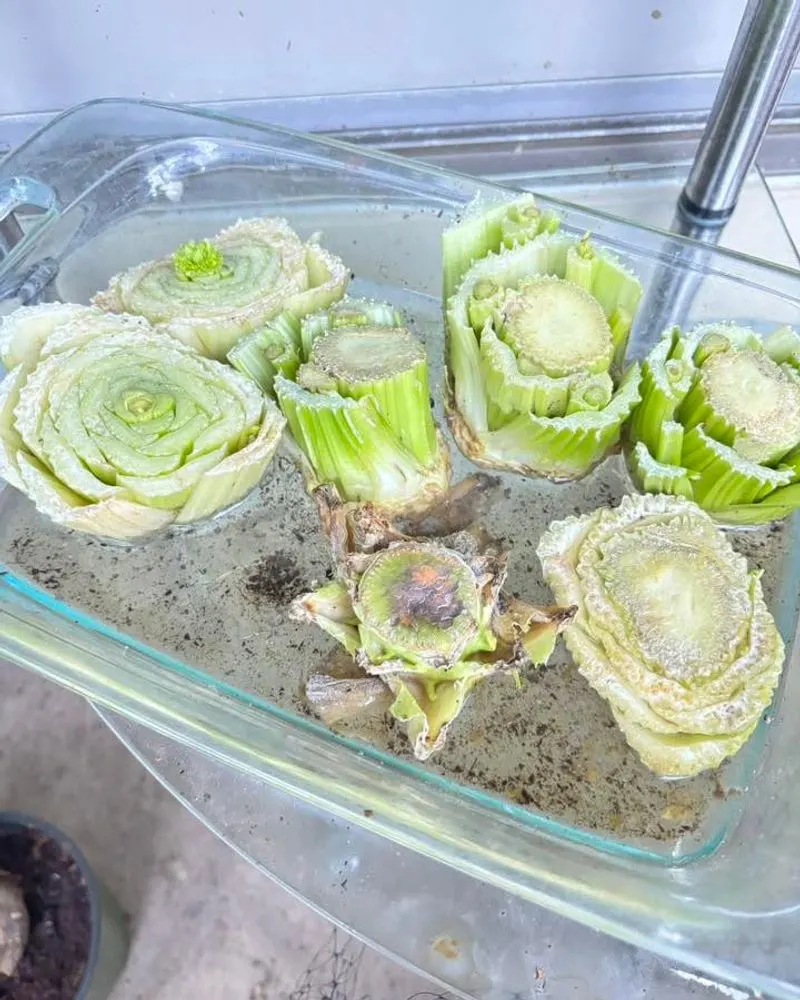Imagine turning your kitchen scraps into a never-ending supply of fresh vegetables — a sustainable, budget-friendly way to keep your garden growing without constant trips to the store. Many common vegetables have the amazing ability to regrow from leftovers, giving new life to what would otherwise be discarded.
From crunchy greens to flavorful roots, these plants can be easily propagated right on your windowsill or garden bed. Not only does this practice reduce waste, but it also connects you more closely to the natural rhythms of growth and renewal. Plus, it’s a fun and rewarding project for gardeners of all skill levels.
In this article, discover 9 vegetables you can regrow indefinitely from kitchen scraps — turning peelings, stalks, and roots into a flourishing garden. Ready to embrace a greener, more sustainable way to garden? Let’s get growing!
Green Onions

Ever notice how green onions are the gift that keeps on giving? Snip off what you need, and before you know it, they’re sprouting back! Place the white root ends in a glass of water, and watch as new green shoots emerge in just days. They’re perfect for those who enjoy a dash of greenery with minimal fuss. Imagine having a perpetual supply of garnish or flavor boost right in your kitchen. Easy to regrow, green onions are a must-try for anyone looking to dip their toes into sustainable gardening.
Lettuce

Lettuce is one of those vegetables that doesn’t mind a little trimming. Cut off the leaves, and place the root base in a little water. In no time, new leaves will begin to appear. How satisfying to harvest fresh lettuce right from your windowsill! It’s not just a space-saver, but a delightful way to keep your salad bowl full without frequent trips to the store. Lettuce is a testament to how scraps can turn into something unexpectedly rewarding, making it a favorite for indoor gardeners.
Celery

Celery might seem unassuming, but it hides a secret talent: regeneration! The next time you chop some, save the base and let it sit in water. Within a week, new growth will peek out, ready to be planted in soil. This simple act transforms your kitchen into a regenerative hub. Celery’s regrowth is not only a fascinating glimpse into nature’s resilience but also a practical way to have fresh stalks on hand. Every time you regrow celery, you’re engaging in a small, delightful experiment.
Garlic

Ever found a garlic clove sprouting on your kitchen counter and wondered if it’s still good? Surprise! That sprout signifies opportunity. Just plant a clove with the sprouted end up in soil, and it will develop into a whole new bulb. This transformation from kitchen scrap to garden treasure is quite the gardening hack. Garlic not only adds flavor to dishes but also offers a unique way to partake in the cycle of growth. It’s an aromatic adventure that begins with a shoot and ends in a bulb.
Bok Choy

Bok choy’s regrowth journey is as swift as it is rewarding. After slicing the leafy greens, save the base and immerse it in water. Soon, fresh leaves will sprout, showcasing its resilience and adaptability. The ease with which bok choy grows back makes it a staple for those eager to keep their kitchen alive with greens. If you love stir-fries or salads, having bok choy on hand without constant shopping trips is a game-changer. Regrowing bok choy from scraps is a small victory in sustainable living.
Carrot Greens

Carrots may not regrow into full roots, but their tops can surprise you. Place carrot tops in water, and soon you’ll have a lush display of greens. Although not a substitute for the root, these greens add a unique twist to pesto or salads. It’s a clever way to utilize every part of the vegetable, championing the idea of zero waste. Regrowing carrot tops introduces a touch of whimsy to your kitchen, as they transform from forgotten ends to vibrant greens, reminding us of nature’s creativity.
Sweet Potatoes

Sweet potatoes bring a sense of satisfaction as they transform from kitchen scraps to flourishing plants. To start, place a sweet potato in water and watch as it sprouts slips. These slips can be planted in soil, producing new tubers over time. The vibrant growth and potential harvest make sweet potatoes an exciting addition to any kitchen garden. Cultivating them offers a continuous supply of nourishing, tasty produce. Their resilience and yield embody the miracle of regrowth, turning leftovers into an edible bounty.

